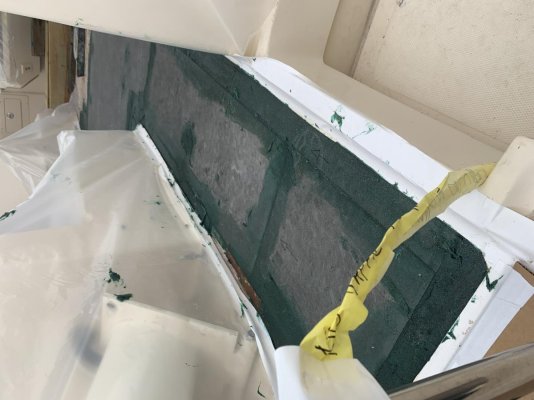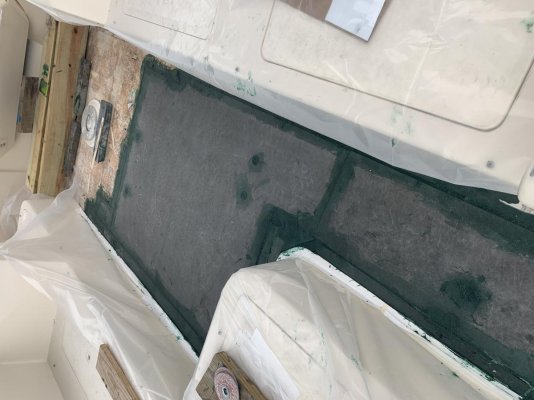Dougcole
Guru
Doug, my glass guy said it was from the folding table was screwed to the floor. Apparently they just screwed through the skin into the balsa. He epoxied it real well when he did the repairs. He also said the stanchion at the top of the stairs had the same problem. It can't hurt to bed all the penetrations on the upper deck including the round table. If you have the time and skill to do so, I would follow Steve D'Antonio's process and the deck should never have a problem, at least from those water sources.
Yep, that job, unlike AC electrical (lol) is well within my skill set. I think I will start with the folding table.
I assume you removed the entire stair rail? I'm wondering how much play there is under that one stanchion if I remove the screws. It might be hard to get to the holes to bore out the core without taking off the rail. I saw on Stella blue that that stanchion is a problem spot, though mine feels solid with no cracks around it.







